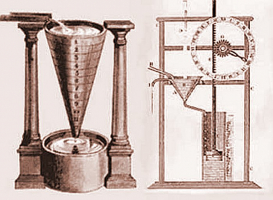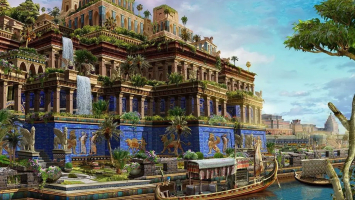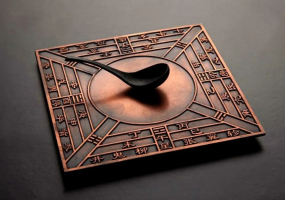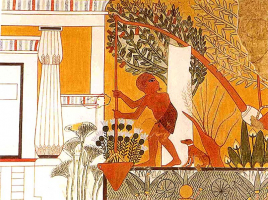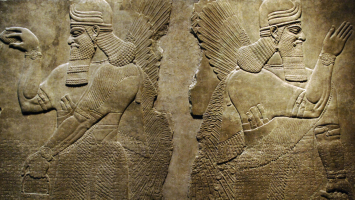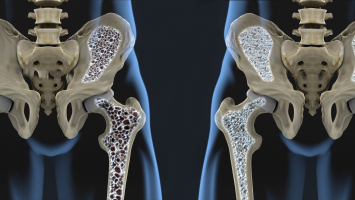Top 11 Inventions and Discoveries of Persian Civilization
Because of its numerous achievements, the Persian civilization might be regarded as one of the most scientific societies in history. The refrigerator, the ... read more...battery, and sulfuric acid were all incredibly advanced innovations for their time, and they can all be attributed to modern-day Iran and Persia. The following are the top inventions and discoveries of the Persian civilization.
-
The term "yakhchal" refers to an ancient evaporation cooler. Yak means "ice" and chal means "pit." The majority of these prehistoric freezers were produced and utilized in Persia. By 400 BC, the Persians had perfected the art of creating and using the yakhchal.
The dome-shaped building above the ground had underground storage. The underground storage area was insulated year-round using heavy, heat-resistant building materials. The subsurface areas had a volume of up to 5,000 cubic meters. Many of these buildings were created many centuries ago and are still standing today.
Through the foundation and underground area, cold air infiltrated the building. The building's conical design allowed any trapped heat to rise and escape, keeping the interior at a lower temperature than the surrounding air. They were constructed using a special mortar called Saroj that is water resistant.
To make the mortar resistant to heat transmission and water, certain ratios of sand, clay, egg whites, goat's hair, and ash were used. The major purpose of the structures was to store ice, but they were also used to store food. The walls at the base of the structures were at least two meters thick. Ice was produced throughout the winter and kept during the summer in the yakhchal.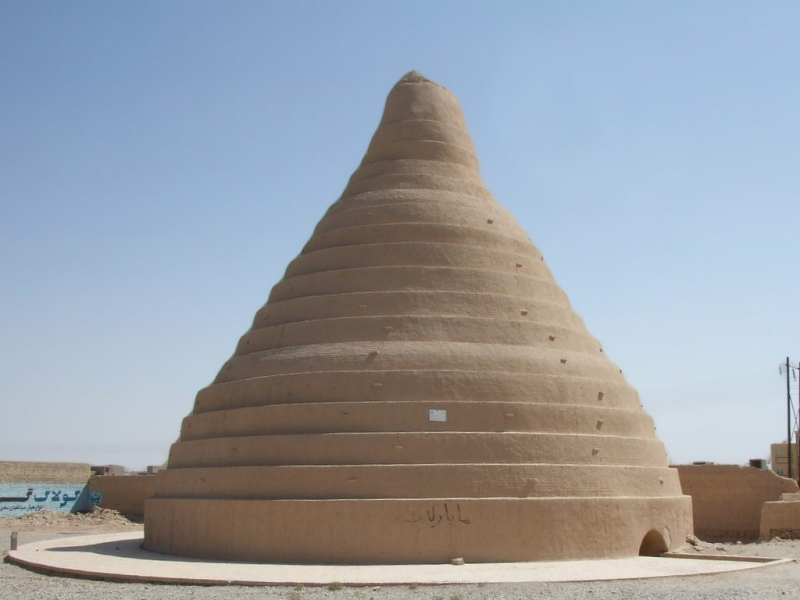
Photo: TripAdvisor -Yakhchal 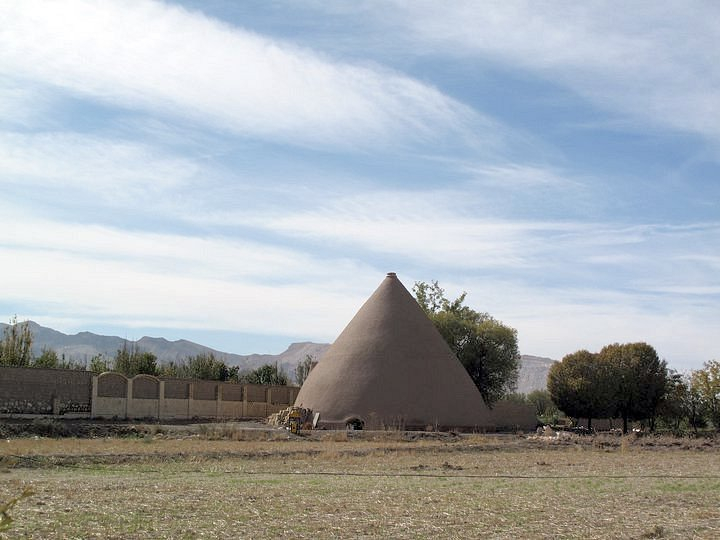
Photo: Tripadvisor - Yakhchal -
The taxation system is one of the inventions and discoveries of the Persian civilization. It was referred to as Achaemenid Taxation and played a significant role in the Achaemenid state administration. Subjects were primarily required to deliver gifts during the leadership of Cyrus II and Cambyses in the Persian Empire, while Darius I was the first to impose regular taxes (r. 522-486 BC). Cyrus II had a state tax system in place, but it was unregulated, so those who didn't pay taxes had to deliver gifts, and vice versa.
Persians were free from paying monetary taxes because they were the nation's governing class, but they were still subject to taxes in kind. The Elamite Fortification record contains details about tax collecting in southwest Iran during the rule of Darius I. The documents include some receipts for state taxes paid on small cattle.With the exception of the Indian satrapy, which made its annual contribution in the form of gold dust, the people of the Achaemenid Empire paid the rulers of that time approximately 7,740 Babylonian talents of silver (or 232,200kg) per year.
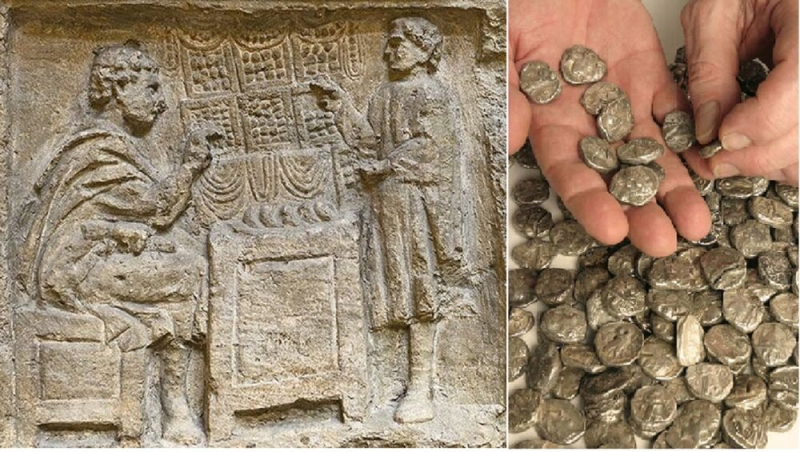
Photo: Greece High Definition - Taxation system 
Photo: VietnamBiz - Tax system -
A qanat is a subterranean waterway that slopes gently and transports water from an aquifer or water well to homes and farmland. Both drinking water and crop irrigation are done using it. Water is supplied from deep wells via an antiquated system of vertical access shafts.
In hot, arid, and semi-arid conditions, it is still a dependable method of providing water to populated areas and for irrigation. Around the beginning of the first millennium BC, the Persians of Iran invented it. From there, it slowly migrated westward and eastward.
The qanat tunnels were dug by hand and were the same size as the person excavating them. They may be many kilometers long. The vertical shafts, which were sunk at intervals of roughly 20 to 30 meters, served as ventilation and access points for repairs in addition to being used to remove excavated materials.
From pre-mountainous alluvial fans, the main qanat tunnels sloped down to an outlet near communities. The canals then delivered the water to the fields for irrigation. Persian farmers were able to withstand extended dry spells without access to surface water because to these constructions, which were created with excellent scientific foresight. Many locations in China, Morocco, and America still employ qanats.
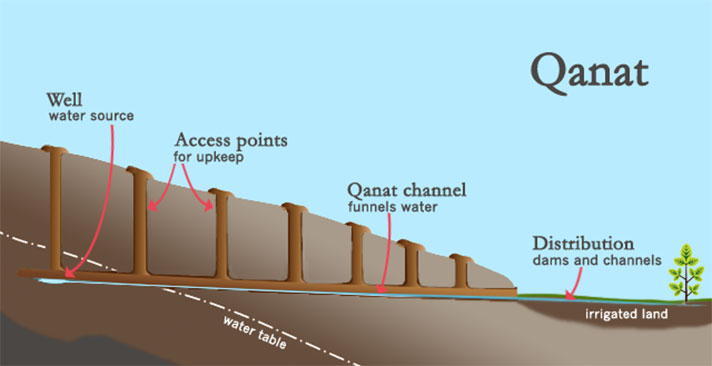
Photo: Iran Doostan - Qanat Photo: XtremeCollectionS - The Persian Qanat :The Underground Water Transport System -
The Achaemenid dynasty's Persian Empire rose to power in the middle of the sixth century BC and conquered Afghanistan and Mesopotamia. The Old Persian language did not directly descend from the Sumerian and Akkadian languages; rather, it formed during the early history of this kingdom. A set of basic written symbols or graphemes (also known as letters) that are standardized to represent the phonemes of specific spoken languages is known as an alphabet. A syllabary, for example, uses each character to represent a syllable, and logographic systems employ characters to represent words, morphemes, or other semantic units. This is not how all writing systems represent language.
Old Persian signs have a cuneiform appearance (in the form of wedges), but their actual shapes differ from those of signs in the earlier system that used corresponding phonetic values.
The term "logogram" is rather misleading because some logograms were also included in the Old Persian syllabary. Old Persian is a syllabic script and a fairly skeletal syllabary, with sounds like /pu/ being written using the signs pa and u rather than distinct signs. Persepolis, Susa, Hamadan, Armenia, Romania, and Kharg Island in the Suez Canal are among the locations where texts in this format have been discovered.
These carvings were created during the reigns of Darius I and his son Xerxes I. Pre-Middle Persian, a more recent dialect of the language, was employed later.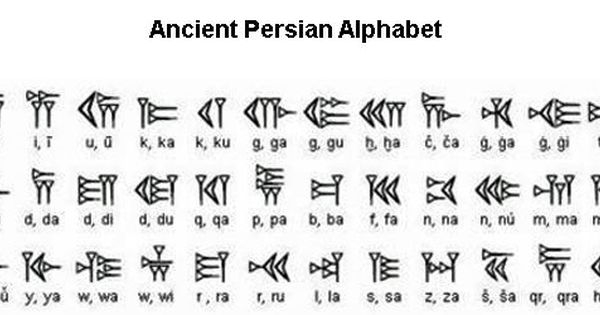
Photo: Pinterest - Persian alphabet Ancient 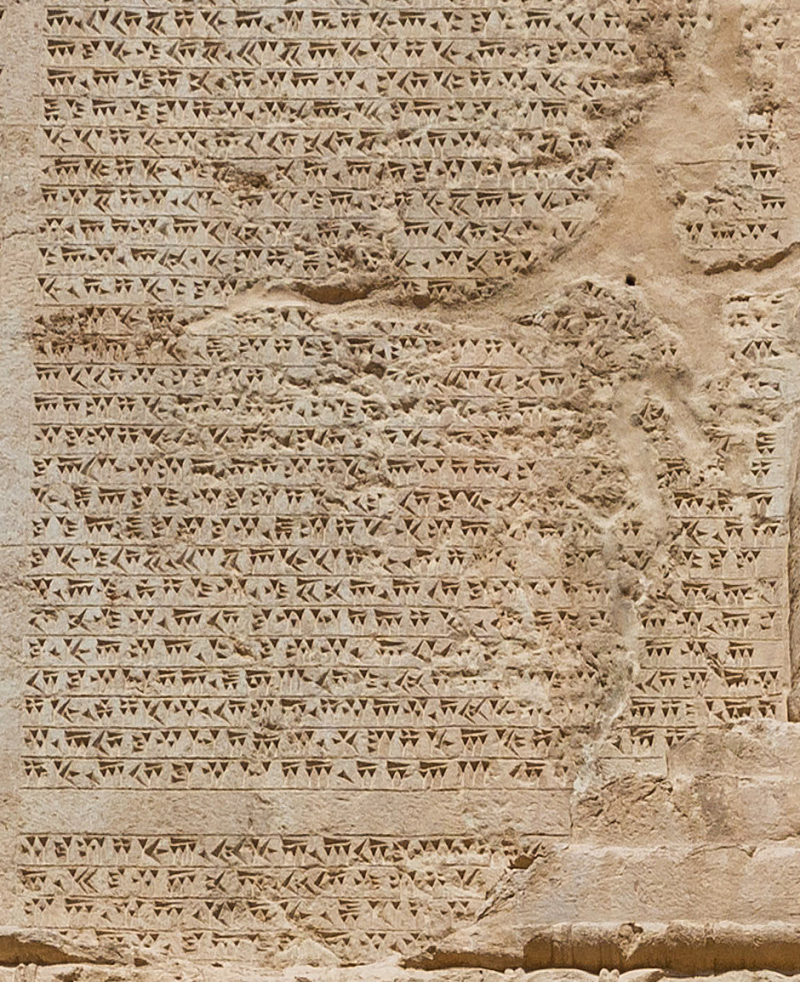
Photo: Quora - Persian's alphabet -
There is solid proof that ancient Iran hosted the world's first regular postal system. Government dispatches made up the majority of the mail that was transported from one location to another by riders and horse-drawn wagons.
According to the Greek historian Herodotus, Cyrus the Great, the first King of the Achaemenid, established the regular postal service in ancient Iran in the sixth century BC. With men and horses standing by the side of the road at regular intervals throughout the daylong voyage and without stopping for anything—be it snow, rain, or heat—the postal service was efficient.
Horses that worked in a relay system powered the ancient Persian postal system, which sped up and improved the efficiency of travel. During that time, the post was a government service used to transport official correspondence across occasionally disturbed routes caused by war, insurrection, or just a lack of security.
A system of messengers known as Chapaar was employed by the service. A horse could travel without rest or nourishment since relay stations were close to one another and couriers carried the mail while mounted. Messengers halted at these relay locations, known as Chapaar-Khaneh post offices or post houses, to pass packets of mail to other messengers or switch horses.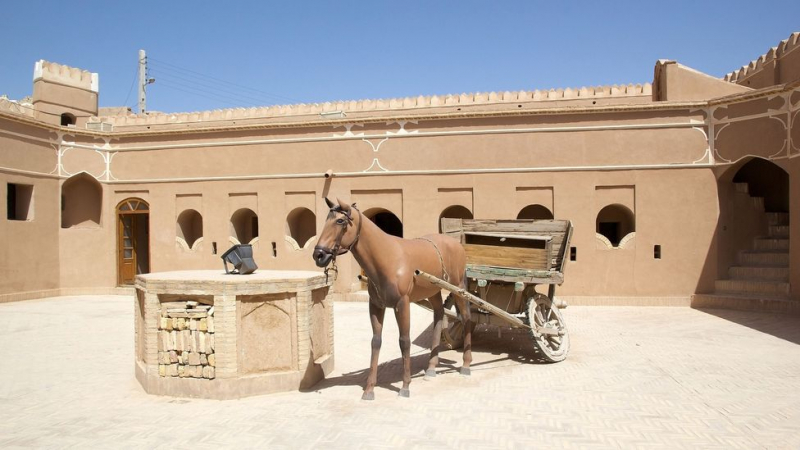
Photo: BBC - The surprising origins of the postal service 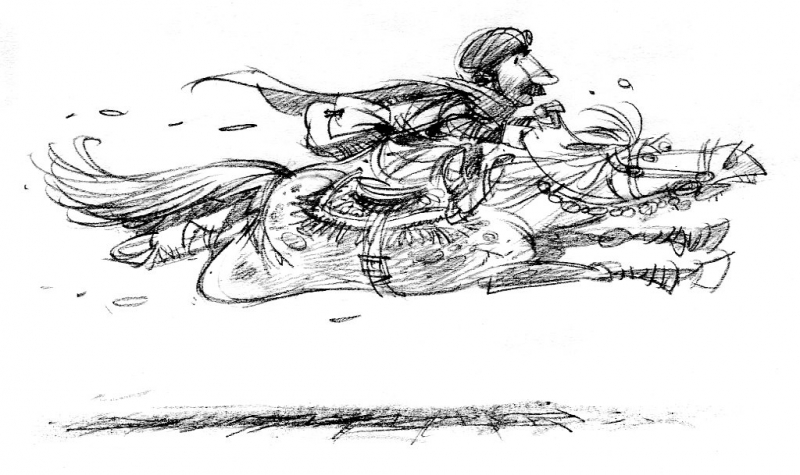
Photo: John Manders' Blog - WordPress.com The Persian Postal Service -
The concept of human rights is a contentious one right now. Despite appearing to be a recent development, the concept of human rights dates back to ancient Persia. In 539 BC, the city of Babylon was taken over by the army of Cyrus the Great, the first king of ancient Persia.
By establishing racial equality, Cyrus liberated the slaves and granted people the freedom to follow any religion they pleased. This proclamation was written down in the Cyrus Cylinder, a baked clay cylinder. It was penned using cuneiform writing and the Akkadian language.
The Cyrus Cylinder, which is currently on display at the British Museum, was found in 1879 in the ruins of Babylon in Mesopotamia. The first four articles of the Universal Declaration of Human Rights are paralleled by the contents of this declaration, which has been translated into each of the six official languages of the United Nations. It has been referred to as the first human rights declaration, and Shah Mohammed Reza Pahlavi supported it in his 1967 book, The White Revolution of Iran.
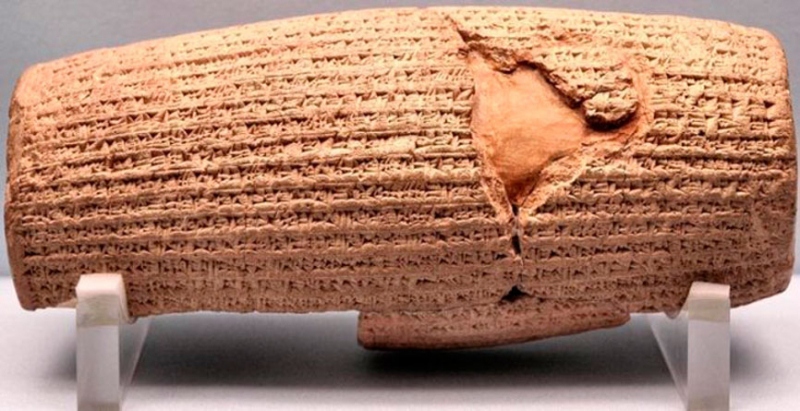
Photo: Wikipedia - Cyrus Cylinder 
Photo: Ingenia - The Earliest Declaration of Human Rights -
Animation is a technique used to make stationary images appear to be moving. Traditional animation involves hand-painting or drawing pictures on transparent celluloid sheets, which are then captured and shown on film. The majority of animations created today use computer-generated graphics (CGI). While 2D computer animation (which sometimes resembles conventional animation) might be employed for artistic reasons, low bandwidth, or quicker real-time renderings, 3D computer animation can be extremely detailed.
Although it has advanced significantly, modern animation has roots in Persia's Bronze Age. A goblet made of pottery that was found in the Burnt City in the province of Sistan and Baluchestan is thought to be 5,200 years old.
A goat is shown jumping toward a tree and eating the leaves in a succession of paintings on the goblet. Sequential images resembling the goblet's can be found all over medieval Islamic Persia.
The specific connection between the photos, which were unearthed by Italian archaeologists at a burial site, was not immediately apparent. Years later, Iranian archaeologist Dr. Mansur Sadjadi learned of this connection. Since then, there has been disagreement among researchers over the significance of the artwork on the bowl. Archaeologists now think the goblet predates the Assyrian culture by 1,000 years. Originally, it was thought to show a goat feeding from the Assyrian Tree of Life.Video: DR M - OLDEST ANIMATION EVER 3000 BC 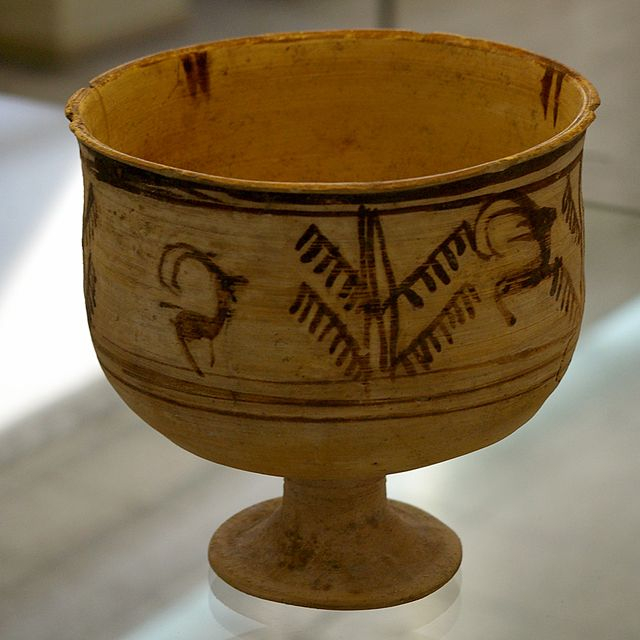
Photo: Introbrand - Old Animation -
Backgammon, one of the inventions and discoveries of the Persian civilization, was first invented in Iran in about 3000 BC. The most popular game in the broad family of table games, which includes board games that use counters and dice, is backgammon. The earliest known instance of backgammon, which is descended from the 16th-century Irish game, dates to the 17th century in England. This family of games has roots in Mesopotamia and Persia, where they have been played for about 5,000 years.
Backgammon is a two-person game in which each player has fifteen pieces. In the US, checkers are sometimes used in place of the original term "men," which is short for "table." By rolling two dice, these pieces move along twenty-four "points." To maneuver the fifteen pieces around the board and be the first to bear off, or remove them from the board, is the goal of the game.
The game of backgammon combines skill and chance (from rolling dice). The dice may decide the result of a single game, but over the course of several games, the better player will build up the superior record. Players must select from a variety of alternatives for moving their pieces with each roll of the dice and predict potential countermoves from the opposition. Players can increase the stakes at any time throughout the game by using the optional doubling cube.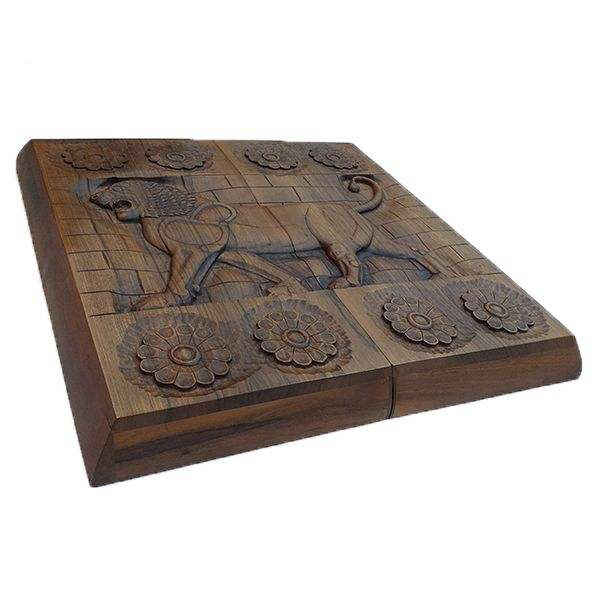
Photo: ShopiPersia - Wooden Carved Backgammon 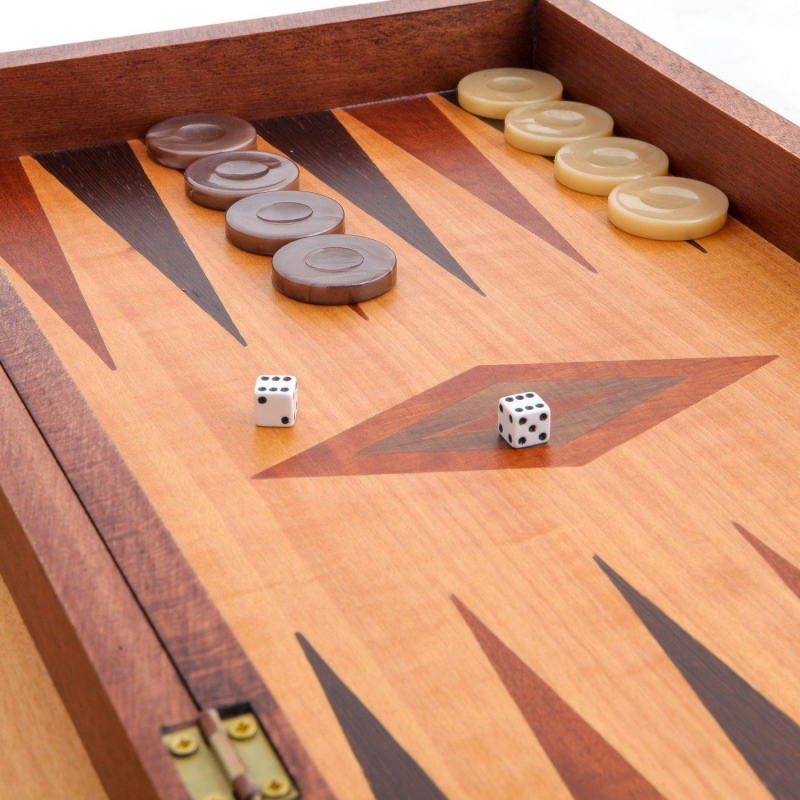
Photo: Elite Crafters - Backgammon Game Set -
One of the most well-known Persian discoveries is sulfuric acid. The first person to discover sulfuric acid was the Persian astronomer, mathematician, and geographer Abu Bakr Muhammad Ibn Jakarta al-Razi. In addition to being a significant discovery at the time, it also served as the foundation for chemical engineering in contemporary chemistry.
Due to its strong affinity for water vapor, pure sulfuric acid does not naturally occur on Earth; it is hygroscopic and rapidly collects water vapor from the air. Since concentrated sulfuric acid is a strong oxidant with potent dehydrating effects, it is extremely corrosive to other materials, including rocks and metals.
The production of sulfuric acid, a crucial commodity chemical, is a reliable measure of a country's economic prowess. It is frequently made using a variety of techniques, including the contact process, the wet sulfuric acid process, the lead chamber process, and others. Another important ingredient in the chemical industry is sulfuric acid. Although it is most frequently employed in the production of fertilizer, it is also crucial for the processing of minerals, oil, wastewater, and chemicals. It can be used in a wide variety of end products, such as household acidic drain cleaners, lead-acid batteries, compound dehydration, and cleaning agents. Sulfur trioxide can be made into sulfuric acid by dissolving it in water.
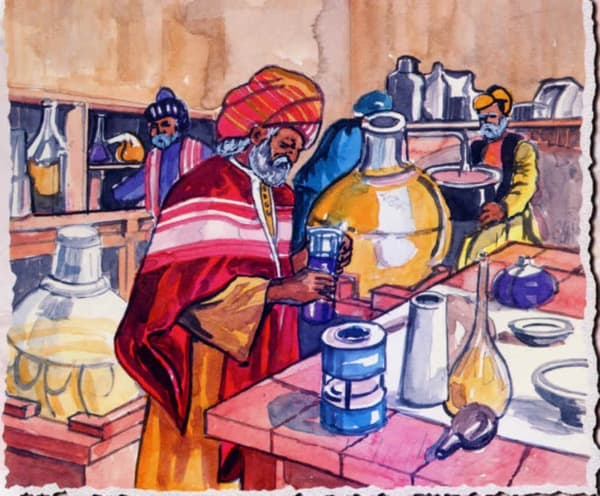
Photo: Abu Bakr Muhammad Ibn Jakarta al-Razi was the first to discover sulphuric acid 
Photo: iStock - Sulphuric Acid -
Known as "Badger" in Arabic and "Badger" in Farsi, a windcatcher (wind tower, wind scoop) is a traditional architectural element used to produce passive cooling and natural ventilation in buildings. Its shape varies greatly and includes height, cross-sectional area, internal sub-divisions, and filters. The first Windcatchers were employed in North Africa and the West Asian nations around the Persian Gulf, and evidence suggests that the first Badger was created by an ancient Iranian three thousand years ago.
Because windcatchers depend on regional weather and microclimate circumstances, not all design strategies will be effective everywhere. A windcatcher's design is determined by the predominant wind direction in that area; if the wind tends to come from only one side, it might simply have one aperture and no internal walls. There might also be radial interior walls, which split the wind tower into vertical pieces, in locations with more changeable wind directions. Stronger winds will cause windcatchers to have smaller overall cross-sections, while hot winds may need the use of numerous smaller shafts to cool entering air. The higher winds that are caught by the taller windcatchers are stronger, colder, and blow in a different direction with less dust. By enhancing ventilation at night, when the outside air is cooler, night-flushing cools the house; wind towers can help with night-flushing.
A windcatcher can also employ evaporative cooling to cool the air by pulling it over cool surfaces. Windcatchers that cool by drawing air over water also use the water as a heat sink if the air is dry. Some of the water is evaporated by the air's heat, which is trapped until the water condenses again. This method of chilling dry air works incredibly well.
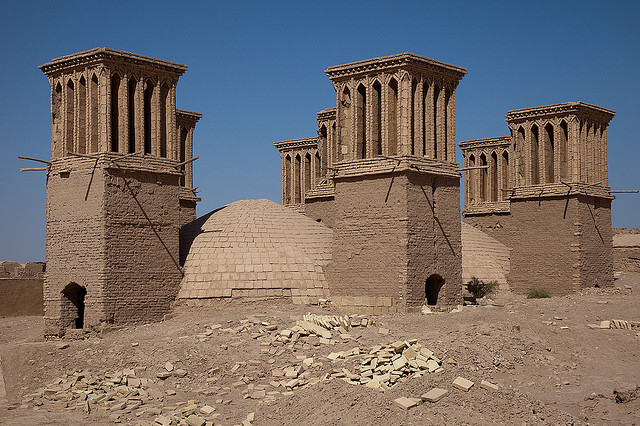
Photo: Kuriositas - The Windcatchers of Persia 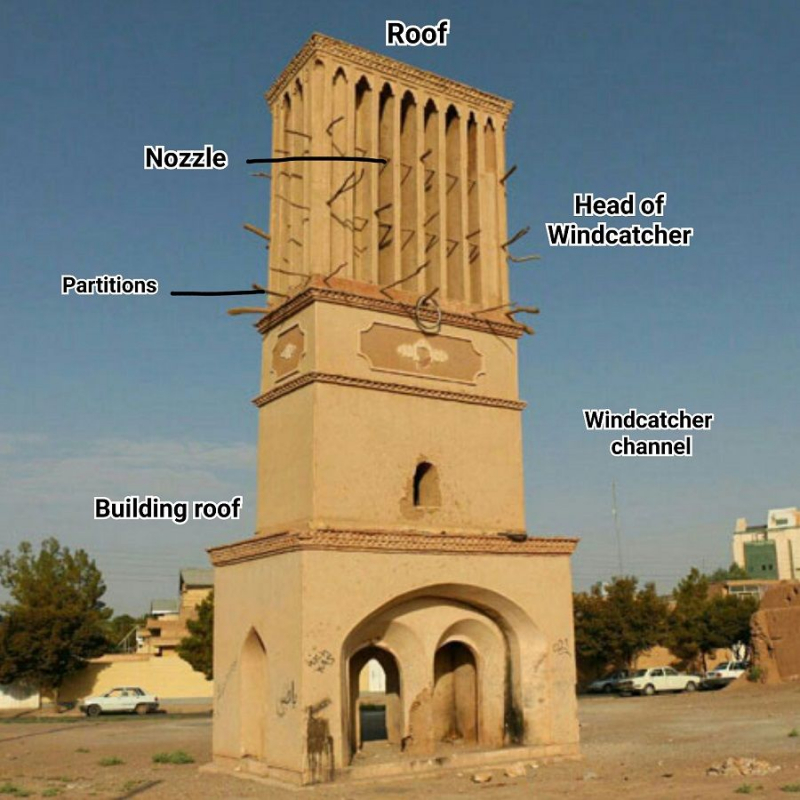
Photo: Kuriositas - The Windcatchers of Persia -
According to the Encyclopedia Britannica, windmills were first mentioned by a Persian millwright in 644 CE and windmills in Seistan, Iran, in 915 CE.
A windmill is a machine that uses sails that are mounted on a spinning shaft to harness the power of the wind. The sails are mounted at an angle or given a minor twist so that the wind's force is split into two components, one of which imparts rotation in the plane of the sails. From the 12th century to the early 19th century, windmills were used more and more often throughout Europe, but after that, their use began to fall as a result of the development of steam power, the internal combustion engine, and the expansion of electric power during World War 1.
The Nashtifan region in northeastern Iran is home to some of the country's oldest windmills, and Sistan, which is located there to the south, has long been a millwright's paradise.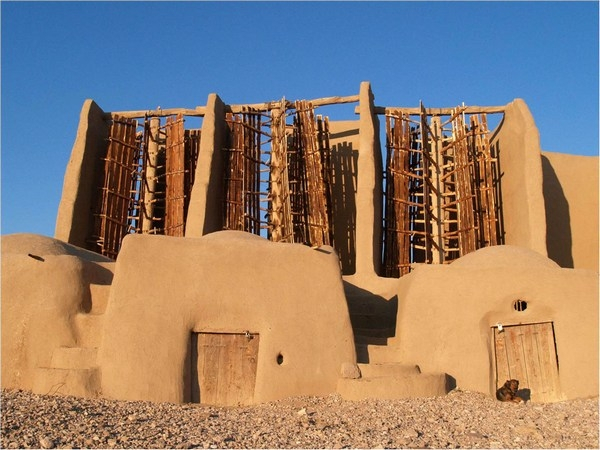
Photo: TheCivilEngineer.org - Historic Iranian windmills 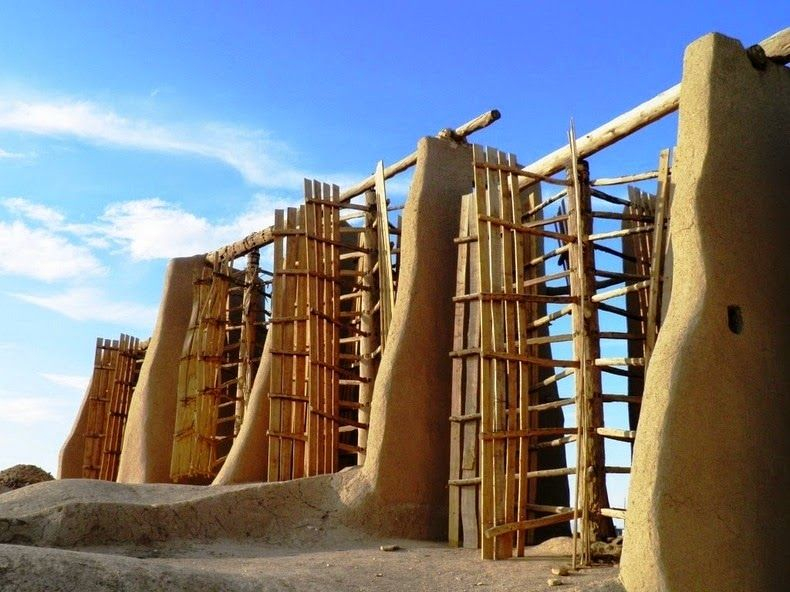
Photo: kawaleesnews.com - Ancient Windmill













